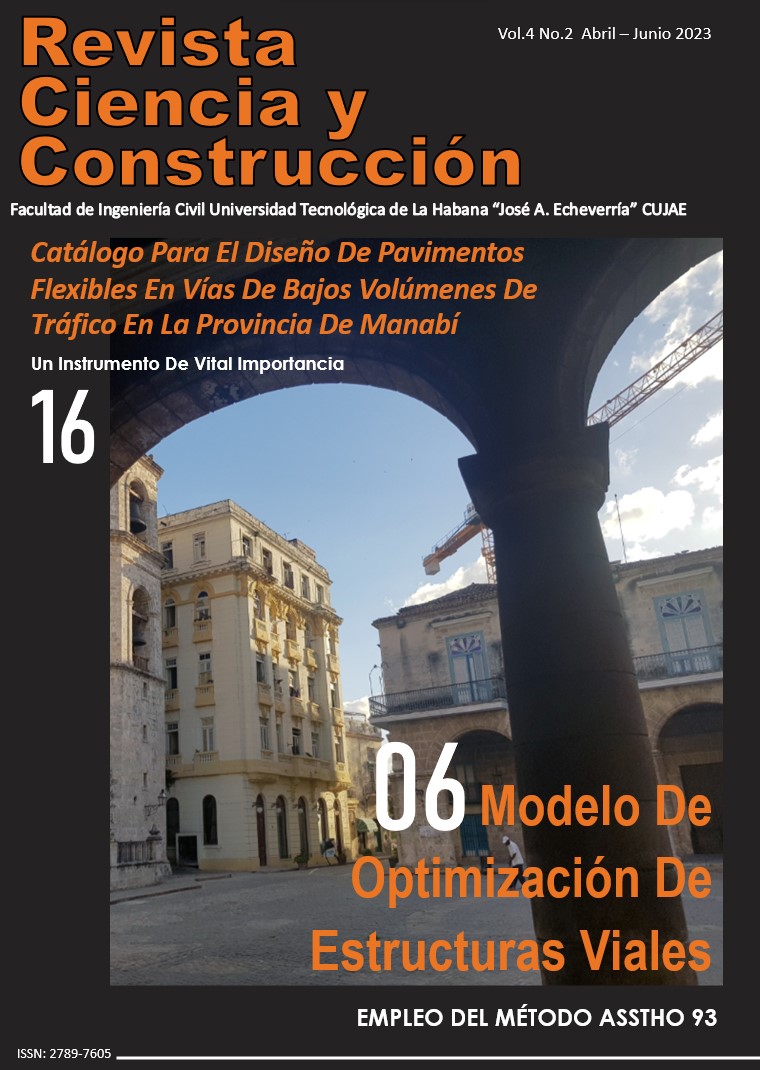Optimization Model For Road Structures
Keywords:
hydraulic cement, soil stabilization, optimization of road structures, flexible pavements, soil - cementAbstract
The roads of the Province of El Oro present deficiencies in their structure, which leads to an improvement for a longer life time and reduction in construction costs. For this reason, a pavement thickness optimization model was developed, stabilizing the subgrade with cement to improve the mechanical properties of the soil and the resistance to weather conditions on the roads. The method used consists of two parts: the analysis and design with the ASSTHO 93 method and the analysis of the analytical method for fatigue and deformation. The method proposes an initial condition by calculating thicknesses based on the ASSHTO 93 Method. Subsequently, simulations are carried out where the fatigue and deformation values are analyzed, which indicate the failure of the wearing course and allowable vertical deformation of the subgrade. . In this process several iterations were carried out, based on the thicknesses obtained with the improved subgrade until obtaining admissible deformations within the allowed ranges. As a result, the optimization model was applied in the case study of the Chilla - Quera road of 15 km, obtaining a CBR of 2.7% and a traffic with an ESAL's of 86078 equivalent axes. The model obtained minimum characteristics with a thickness of asphalt layer that must be greater than 9 cm and Mr of 3000 MPa, a base between 10 and 15 cm, with a Mr between 195 and 365 MPa, a subbase greater than 20 cm with a Mr greater than 120 MPa and a soil-cement base of 15 cm of Mr greater than 1000 MPa.
Downloads
Published
How to Cite
Issue
Section
License
The contents of this journal are under a Creative Commons Attribution-NonCommercial 3.0 Unported License, meaning that its copy and distribution are by all means allowed for as long proper acknowledgments are given and commercial use is not involved.










